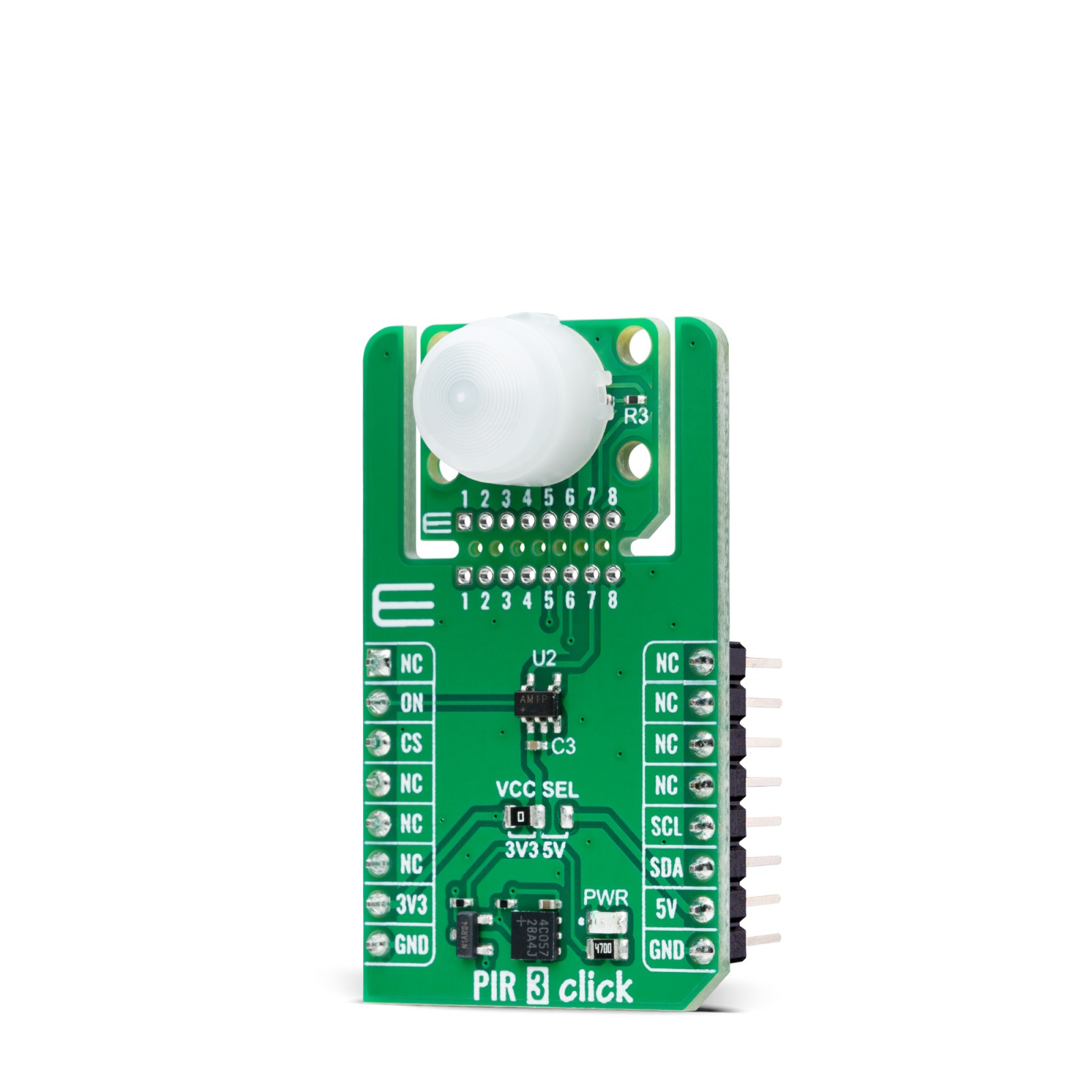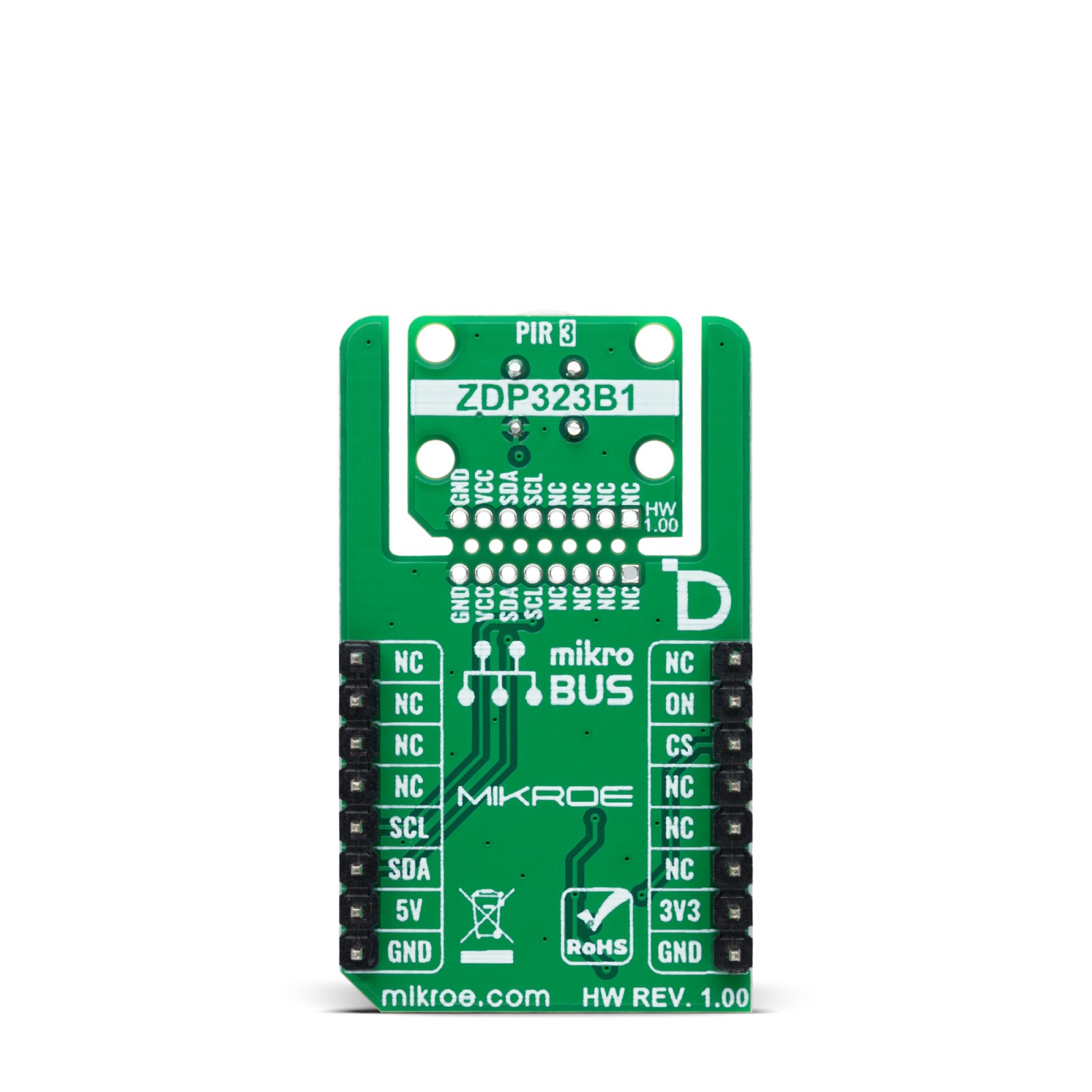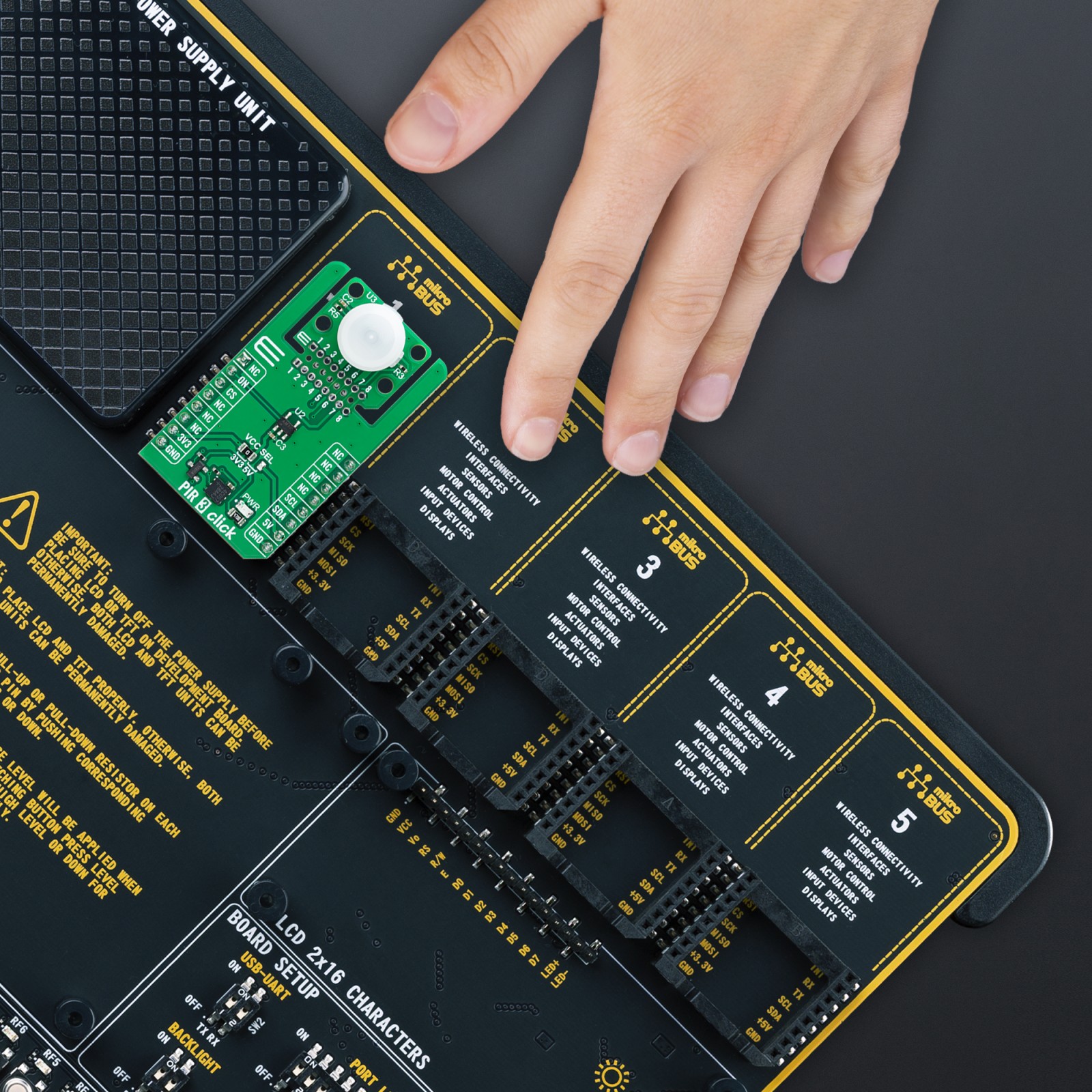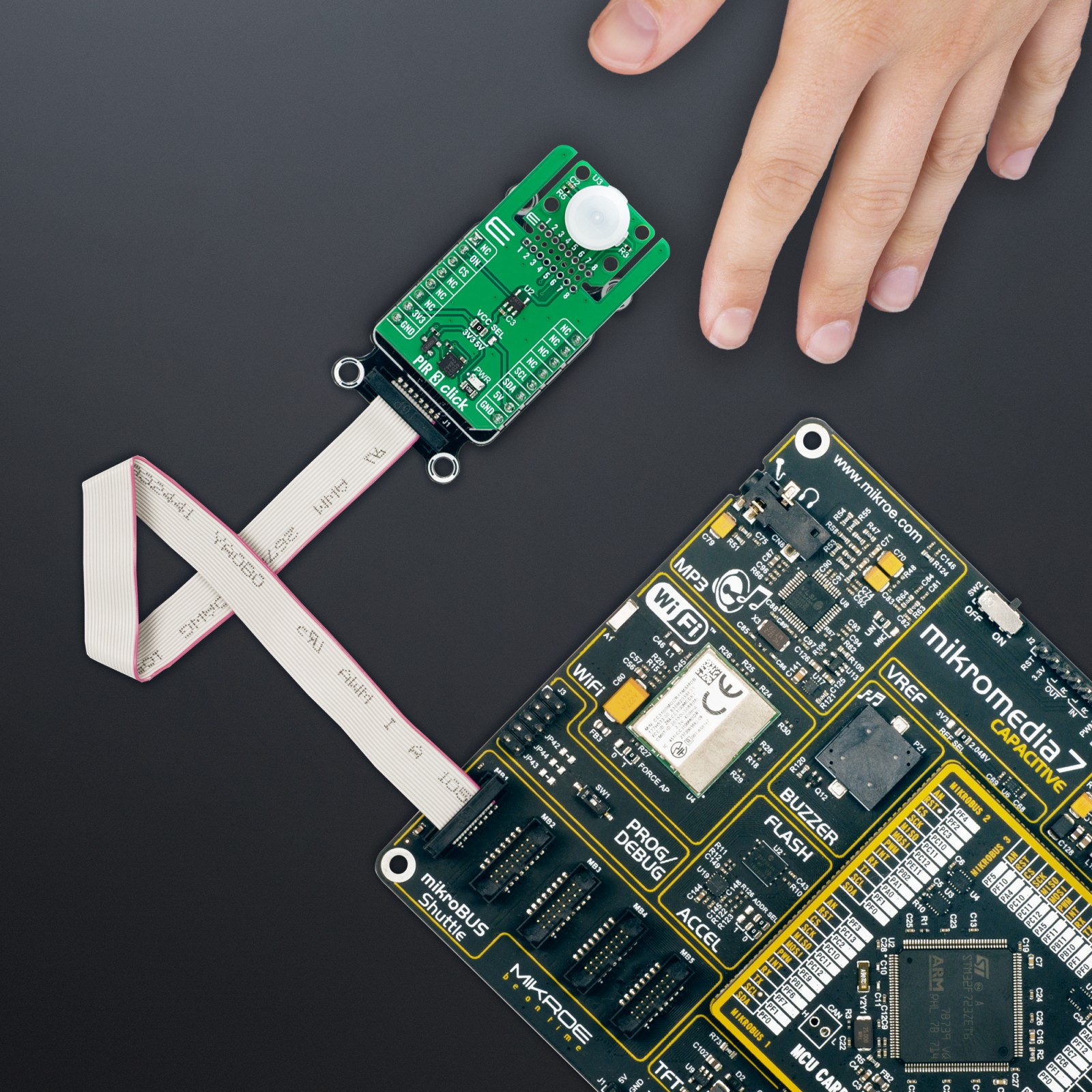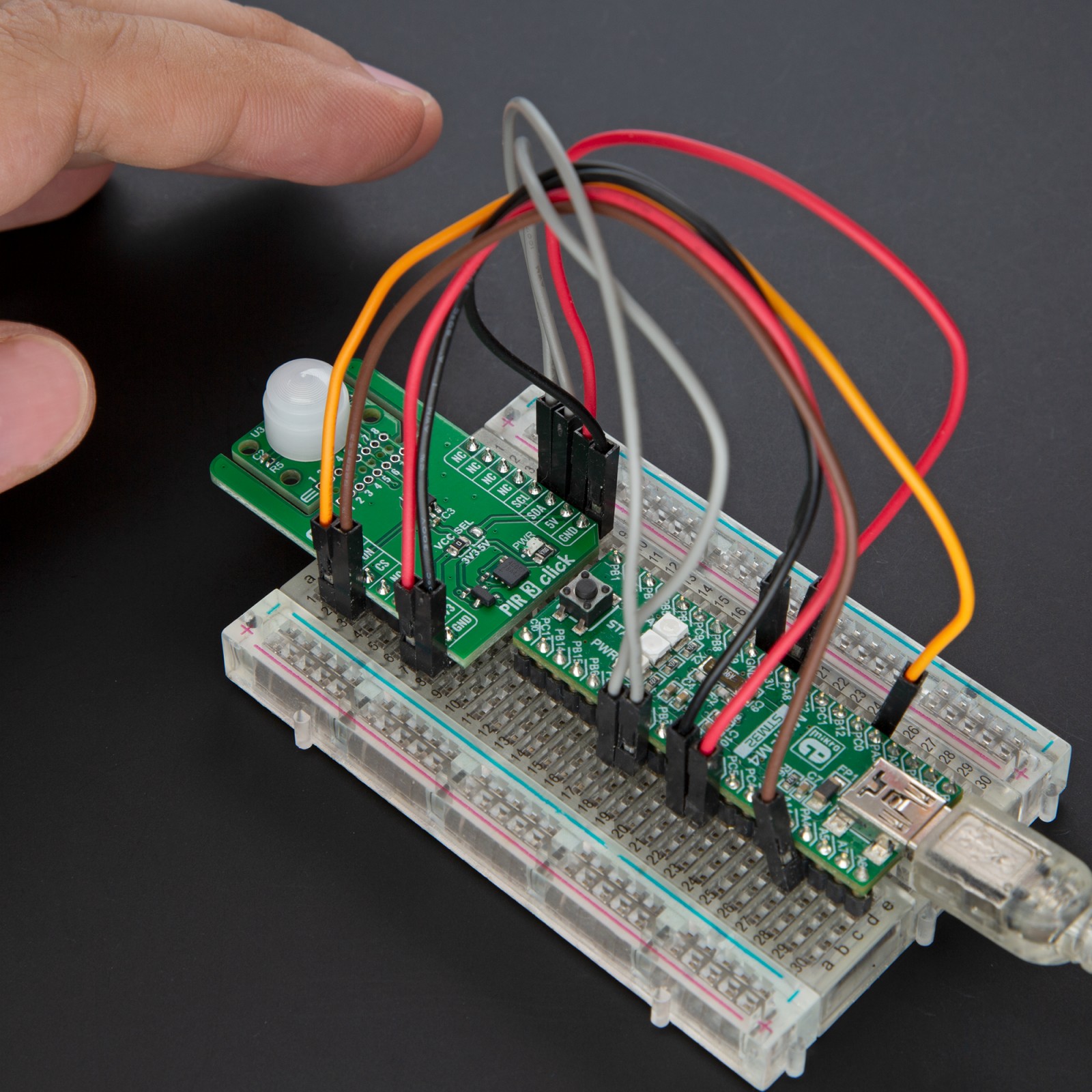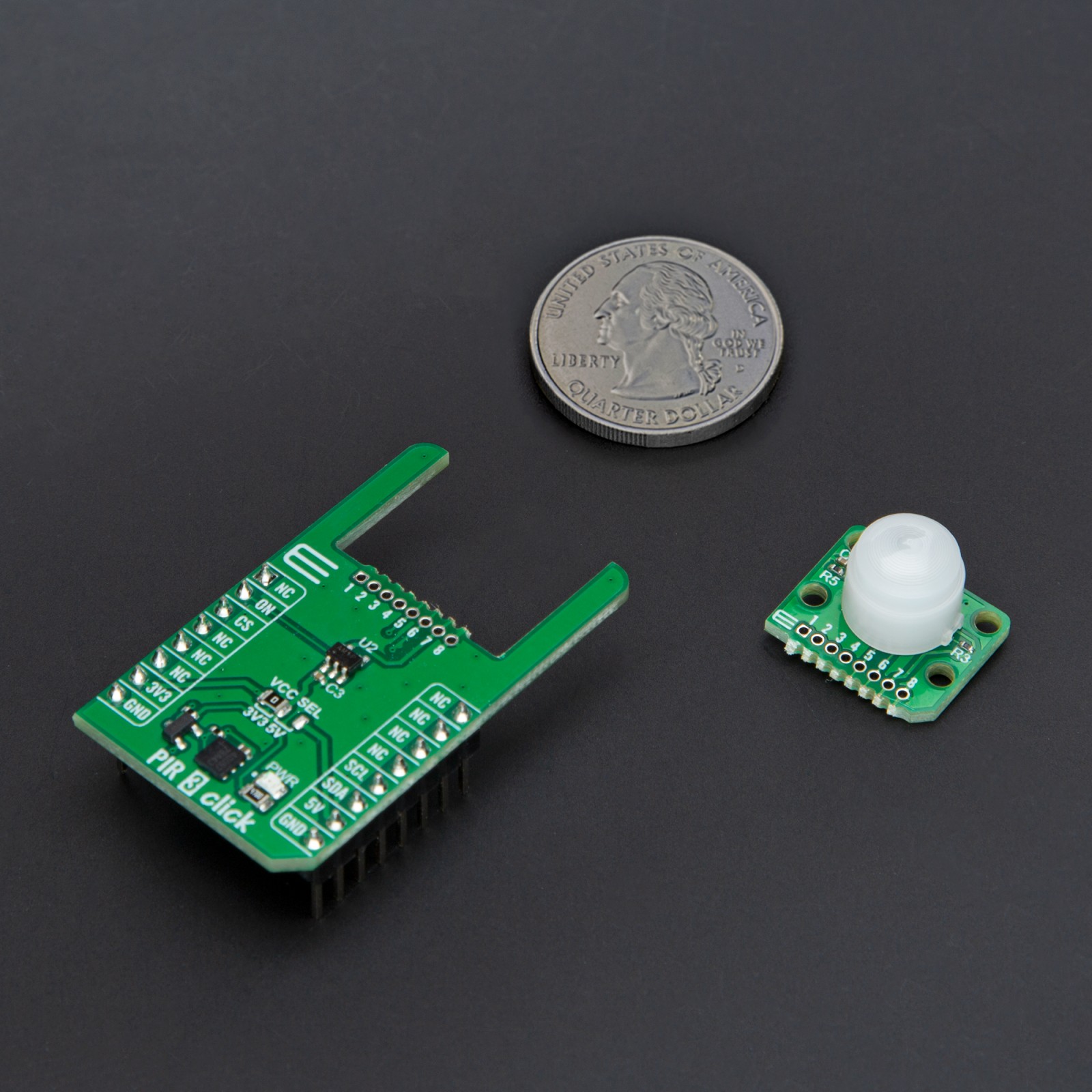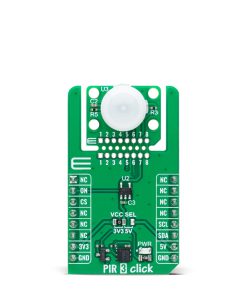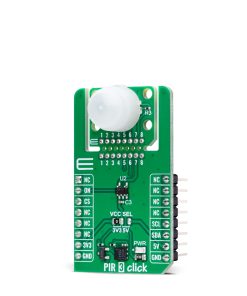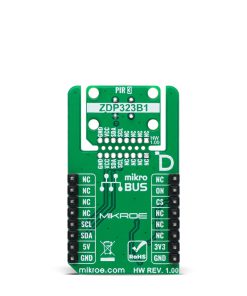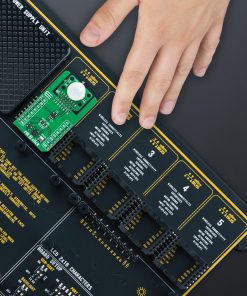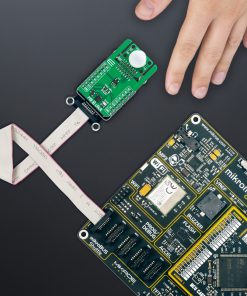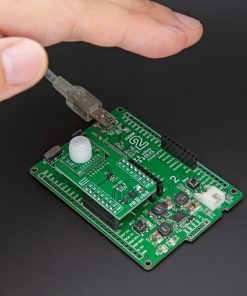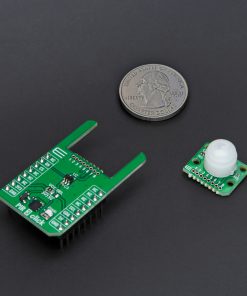PIR 3 Click
R540.00 ex. VAT
PIR 3 Click is a compact add-on board designed for efficient and reliable motion detection in various applications. This board features the ZDP323B1 sensor from Zilog (Littelfuse), with high EMI immunity and precise motion detection capabilities. It includes a spectral filter window tuned to an 8-13um wavelength, dual sensing elements with a 0.6mm spacing, and a field of view of 148° on the X-axis and 136° on the Y-axis. The board also integrates the ZNCL10S PIR lens for maximum IR transmissivity and includes the Click Snap feature for flexible implementation. Ideal for security systems, lighting control, and video doorbells, PIR 3 Click ensures high performance and flexible implementation in demanding motion detection applications.
PIR 3 Click is fully compatible with the mikroBUS™ socket and can be used on any host system supporting the mikroBUS™ standard. It comes with the mikroSDK open-source libraries, offering unparalleled flexibility for evaluation and customization. What sets this Click board™ apart is the groundbreaking ClickID feature, enabling your host system to seamlessly and automatically detect and identify this add-on board, alongside a Click Snap feature introducing a new level of flexibility and ease of use.
Stock: Lead-time applicable.
| 5+ | R513.00 |
| 10+ | R486.00 |
| 15+ | R459.00 |
| 20+ | R441.72 |


